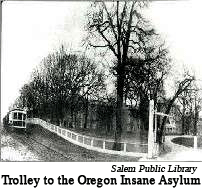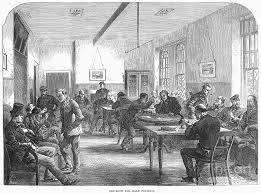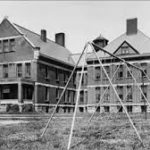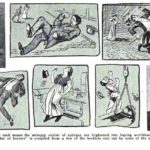Though few people wanted to be in an asylum–probably including its staff at times–many people did go to asylums either out of a sense of duty or of curiosity. Bands from a nearby town would often provide music for patients, while other people would offer lectures, magic lantern shows and other entertainments, or conduct religious services.
Family members also visited, though not with as great a frequency as most patients would have liked. Asylums generally served a local population, but the “local” area could be geographically immense in an era without access to easy travel. Some families couldn’t afford to visit, others couldn’t take time off from other duties if they were far away, and others may have been glad to abandon a troublesome charge to the care of a state institution.
Additionally, superintendents actively discouraged family visits or simply wouldn’t allow them at all, saying that these visits either upset the patients or made them want to go home before they were actually cured. Medical staff believed that patients could trick family members visiting for a few hours into thinking them well enough to return home when they really were not, thus ruining all the staff’s hard work and forcing a relapse.
Other people who came to asylums were simply curious. Some wanted to see patients because they were interested in mental health, while others looked at patients as entertainment on the order of a circus sideshow. Some authorities were appalled at the idea of curiosity-seekers, saying that patients in a hospital with physical ailments would never be subjected to such indignities. However, tourists and other visitors were often allowed in asylums, and there is no doubt that many patients resented their visits.
The Canton Asylum for Insane Indians was no exception. People visiting Canton or simply passing through the area, school students, and newspaper reporters often stopped at the asylum for a tour or made arrangements to do so. A staff member showed visitors around, and Dr. Harry Hummer tried to be on hand whenever medical students were going through the facility. Visiting hours were from 1 – 5 p.m. Wednesdays and Fridays.








